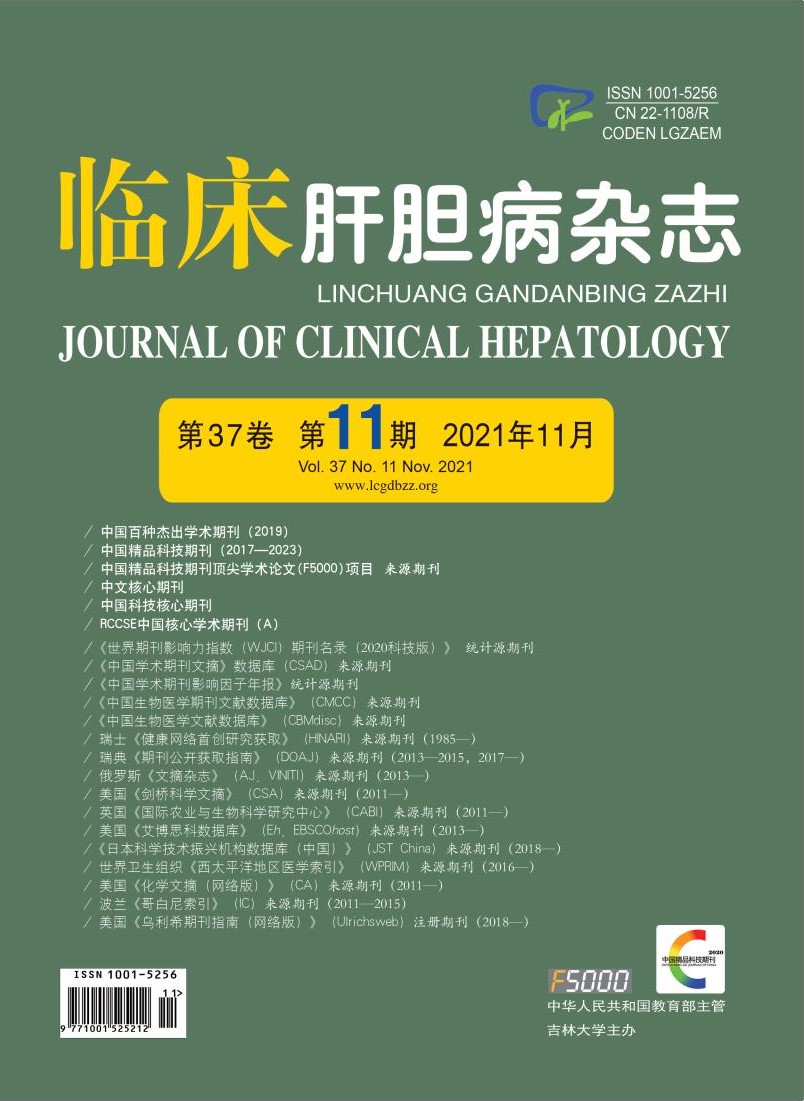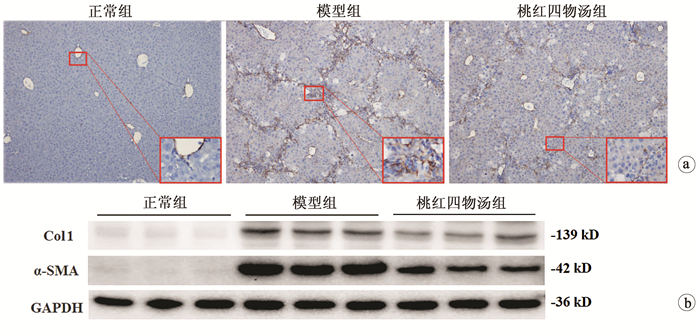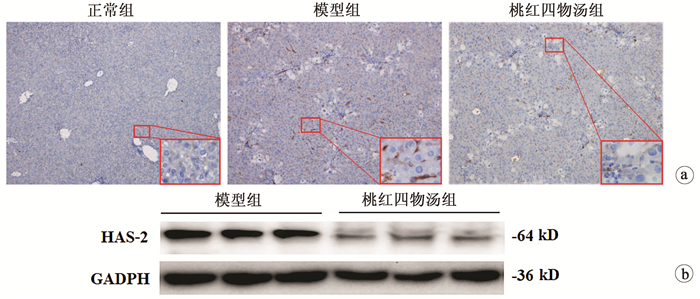| [1] |
PAROLA M, PINZANI M. Liver fibrosis: Pathophysiology, pathogenetic targets and clinical issues[J]. Mol Aspects Med, 2019, 65: 37-55. DOI: 10.1016/j.mam.2018.09.002. |
| [2] |
LIU FW. The curative effect of Taohong Siwu Decoction in the treatment of decompensated cirrhosis and its effect on coagulation function[J]. Mod J Integr Tradit Chin West Med, 2016, 25(15): 1662-1664. DOI: 10.3969/j.issn.1008-8849.2016.15.023. |
| [3] |
WANG WQ, WANG BX, SHAO WW. The effect of Angelica on the content of liver collagen protein of hepatic fibrosis rats induced by CCl 4[J]. Heilongjiang Med Pharm, 2003, 26(3): 25. DOI: 10.3969/j.issn.1008-0104.2003.03.011. |
| [4] |
WANG YQ. Anti hepatic fibrosis effect of peach kernel extract and its molecular mechanism[J]. J Med Theor & Pract, 2014, 27(15): 2015-2016. DOI:10.3969/j.issn.1008- 0104.2003.03.011.
王玉清. 桃仁提取物抗肝纤维化作用及其分子机制研究[J]. 医学理论与实践, 2014, 27(15): 2015-2016. DOI:10.3969/j.issn.1008- 0104.2003.03.011.
|
| [5] |
MCQUITTY CE, WILLIAMS R, CHOKSHI S, et al. Immunomodulatory role of the extracellular matrix within the liver disease microenvironment[J]. Front Immunol, 2020, 11: 574276. DOI: 10.3389/fimmu.2020.574276. |
| [6] |
WANG F, CHANG HM, YI Y, et al. TGF-β1 promotes hyaluronan synthesis by upregulating hyaluronan synthase 2 expression in human granulosa-lutein cells[J]. Cell Signal, 2019, 63: 109392. DOI: 10.1016/j.cellsig.2019.109392. |
| [7] |
LIU C, YUAN X, TAO L, et al. Xia-yu-xue decoction (XYXD) reduces carbon tetrachloride (CCl 4)-induced liver fibrosis through inhibition hepatic stellate cell activation by targeting NF-κB and TGF-β1 signaling pathways[J]. BMC Complement Altern Med, 2015, 15: 201. DOI: 10.1186/s12906-015-0733-1. |
| [8] |
SHI K, LIU Y, WANG X, et al. Adjuvant Fuzheng Huayu Capsule reduces the incidence of hepatocellular carcinoma in patients with hepatitis B-caused cirrhosis[J]. Evid Based Complement Alternat Med, 2020, 2020: 8826091. DOI: 10.1155/2020/8826091. |
| [9] |
ZHANG W, YANG GY, SHEN DX, et al. Mechanism of action of Xiayuxue decoction in inhibiting liver fibrosis by regulating glial cell line-derived neurotro phic factor[J]. J Clin Hepatol, 2021, 37(3): 575-581. DOI: 10.3969/j.issn.1001-5256.2021.03.015. |
| [10] |
LI ZY, TIAN YZ. Treatment of liver fibrosis by the Tibetan medicine Lang Qing A Ta according to stasis and heat[J]. J Changchun Univ Chin Med, 2019, 35(6): 1223-1225. DOI: 10.13463/j.cnki.cczyy.2019.06.061. |
| [11] |
CHEN FY, TU CT. The role and molecular mechanism of Notch signaling transduction pathway on liver fibrogenesis[J/CD]. Chin J Liver Dis(Electronic Edition), 2020, 12(4): 23-28. DOI: 10.3969/j.issn.1674-7380.2020.04.004. |
| [12] |
KISSELEVA T, BRENNER D. Molecular and cellular mechanisms of liver fibrosis and its regression[J]. Nat Rev Gastroenterol Hepatol, 2021, 18(3): 151-166. DOI: 10.1038/s41575-020-00372-7. |
| [13] |
YUAN H, ZHAO C, BAO X, et al. Anti-liver fibrosis effect of total flavonoids from Scabiosa comosa Fisch. ex Roem. et Schult. on liver fibrosis in rat models and its proteomics analysis[J]. Ann Palliat Med, 2020, 9(2): 272-285. DOI: 10.21037/apm.2020.02.29. |
| [14] |
PASSI A, VIGETTI D, BURASCHI S, et al. Dissecting the role of hyaluronan synthases in the tumor microenvironment[J]. FEBS J, 2019, 286(15): 2937-2949. DOI: 10.1111/febs.14847. |
| [15] |
YANG YM, NOUREDDIN M, LIU C, et al. Hyaluronan synthase 2-mediated hyaluronan production mediates Notch1 activation and liver fibrosis[J]. Sci Transl Med, 2019, 11(496): eaatg284. DOI: 10.1126/scitranslmed.aat9284. |








 DownLoad:
DownLoad:

